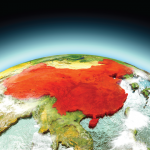All of this is to enforce social distancing. In the absence of a vaccine or effective therapies, both of which won’t be in hand for years, prevention is the only cure. Social distancing is based on the concept that community spread can’t occur in the absence of a community.
The CDC recommends, whenever possible, maintaining a distance of six feet between you and other people; it also recommends avoiding congregate settings, which are defined as crowded areas where close contact with other people may occur, such as movie theaters, shopping centers, and stadiums. Working remotely, when possible, may also be helpful.
Many institutions are enforcing social distancing. At the undergraduate level, many schools are extending spring break, asking students not to return to their dorms for the time being; other institutions are moving to Zoom and other platforms created to allow for video conferencing. Because it is important to find humor in our darkest moments, it’s amusing to think that medical students, who already don’t show up for lectures, were simply ahead of their time.
Medical institutions are largely instituting similar changes; at Johns Hopkins, these include the following:
- Meetings are limited to 25 people or less;
- Work-related travel is prohibited;
- All conferences will be attended remotely;
- Bedside evaluation of patients suspected of having COVID-19 are limited to essential personnel; and
- Housestaff teams are assigned patients suspected of having COVID-19 only after non-housestaff teams are at capacity.
One more thing: The housestaff have moved to boxed lunches, rather than the big trays of food that used to be brought in at lunchtime.
This just makes the point that even simple interventions may have a dramatic impact. On March 12, Emmanuel Macron, the president of France, tweeted, “Wash your hands, greet people without kissing. … These acts may appear anodyne. They will save lives.” Simple acts, like routine hand-washing, are common-sense ways to limit the spread of a communicable disease among healthcare workers who are likely at higher risk of exposure.
In the absence of official guidelines, national and international organizations have taken it upon themselves to make some tough decisions. The ACR, the American College of Cardiology and the American Academy of Dermatology have already canceled major conferences. For other large organizations that are contemplating their options, I pass along the helpful advice given by Yascha Mounk, PhD: “Cancel everything. Now.”
Epilogue
The search for treatments is well underway. More than 80 clinical trials are being conducted in China alone, in collaboration with the WHO. Clinical trials for COVID-19 are focused on repurposing extant drugs and largely fall into four groups:
- Nucleoside analogs, which you predominantly know as antiviral drugs (e.g., favipiravir, ribavirin, remdesivir, galidesivir);
- Protease inhibitors, which form the cornerstone of the treatment for human immunodeficiency virus (e.g., disulfiram, lopinavir, ritonavir);
- Drugs that stimulate host immunity, such as pegylated interferon α-2a and -2b, chloroquine, hydroxychloroquine and nitazoxanide; and
- Immunosuppressive drugs, given the association between COVID-19 and cytokine storm (e.g., intravenous immunoglobulin, tocilizumab, baricitinib and glucocorticoids).
In China, tocilizumab has been approved for the treatment of severe complications of COVID-19. The Italian Society of Infectious and Tropical Diseases, on the other hand, recommends the use of either a protease inhibitor (i.e., lopinavir/ritonavir) or a nucleoside analog (specifically, remdesivir), in combination with an antimalarial (i.e., chloroquine or hydroxychloroquine). That said, a recent clinical trial demonstrated that lopinavir/ritonavir, when used to treat hospitalized patients with severe COVID-19 infection, did not impact either time to clinical improvement or viral load. Similarly, the tremendous enthusiasm for the use of hydroxychloroquine belies the scant clinical data supporting its use for COVID-19.


